Maintaining a Hardware in the Loop (HIL) system in a clean, professional, and cost-effective manner can be tricky, and for many engineers just starting out and not having a lot of experience with different tools it can be a recipe for disaster. With the proper hardware on-hand, maintenance can be made a lot easier. Here is a list of essential hardware for any HIL engineer to know and stock in their lab.
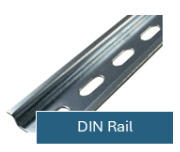
DIN Rail is so ubiquitous in HIL systems, that this practically goes without saying. DIN Rail is essential. It can be instrumental in spanning large gaps and providing a robust and semi-permanent mounting point for many common components in HIL systems.

10-32 is the most common hardware form-factor used in 19” rack systems. Make sure your lab is stocked with a healthy supply of pan-head screws, wing nuts, clip nuts, hex nuts, and washers. In addition to mounting hardware to a 19” rack, 10-32 screws are also the perfect size for the slot in the center of DIN Rails, making them compatible across many areas of the system and a perfect choice for the largest or load-bearing applications in a HIL system.

4-40 is a very common size for hardware in electronics. 4-40 is commonly used for mounting hardware like power supplies, networking equipment, PCBs, etc. It is also the size of screw used in many D-sub connectors, like DB9. It’s a good idea to stock both short and long 4-40 screws, standoffs, hex nuts, lock washers, and flat washers. 4-40s are just a bit smaller than M3s (another common size used in electronics), so 4-40s can also work in-a-pinch for fitting into un-threaded M3-sized holes.

Terminal blocks are perhaps just as ubiquitous as DIN rails in HIL systems. Terminal blocks can be instrumental when used as test points, but they also allow you to make custom groups of connections where each connection point is easy to access and can be reconfigured as needed. Using terminal blocks in-conjunction with bus-bars can also be a convenient way to splice many connections in an easy to understand and semi-permanent way.
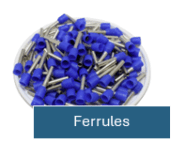
Anyone who has used screw terminal blocks knows what it’s like to pull a mangled braided core wire out of it. We also know how frustrating it can be to struggle with the loose strands of a wire as we try to insert it back into a terminal block. Ferrules eliminate this headache by making the exposed ends of a wire more robust and less likely to be destroyed. Ferrules are invaluable for ensuring consistent connections at terminal blocks.

Labels go a long way towards documenting a bundle of wires. For total peace of mind, label both sides of the wires in your system. That way you can remove individual wires completely and have the confidence to know where each one came from and how to put it back.

Large bundles of randomly colored wires may look impressive at first, but they can be distracting and prone to snares. Split wire-loom with Velcro is a great way to clean up the system while still allowing access to all of the individual wires as needed.
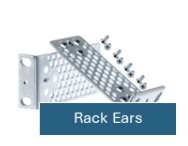
Rack ears are simply 90-degree brackets with holes and spacing designed specifically for 19” racks. When a couple rack ears are paired with 10-32 hardware and DIN rails, the entire space of your rack begins to look more like a canvas as you see all the opportunities to mount hardware in places you could only previously imagine.

Project boxes, specifically with a flange, are a great way to protect small components and clean up the system. Mount your PCBs or other components inside the box with 4-40s and use 10-32’s through the flange on the outside for an easy and robust installation.

Relay modules with a built-in relay driver circuit can be invaluable for basic signal switching and routing needs. If you can find relay modules that operate at TTL voltage levels and are also DIN rail mountable, you have struck gold! Relay modules are preferable to relays because the signal conditioning can allow the control signals to switch the relay from as low as 2V to as high as 20V, making them extremely convenient to control with any spare DO you have available.
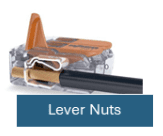
Lever nuts are the cool uncle of the more-common butt splice connectors. Lever nuts allow you to splice two or more wires together quickly and easily in a non-permanent but robust way without any tools. For a quick and non-destructive splice, there is no better option.

Velcro cable ties are worth their weight in gold. They are inexpensive, versatile, and durable enough to be used in nearly every situation that zip-ties would be used, but they can be removed and re-applied without tools. This vastly reduces the hassle of cutting and re-applying zip ties to bundles of wire throughout the system.
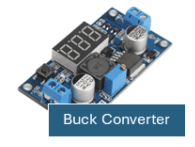
A buck converter is a simple DC-DC converter that steps down the voltage from its input to its output. They can be handy for situations where you need to step a 12V power supply down to 9V or 5V for a low-power device or circuit. They can introduce some switching noise and may allow for transient over/under voltage conditions as the load or temperature changes but can also be an inexpensive and appropriate solution for many situations where these are not critical to performance.
While this is not a comprehensive list of everything you may need for maintaining your HIL system, it is a good list of essential hardware to always have on hand to ensure that maintenance goes smoothly!






